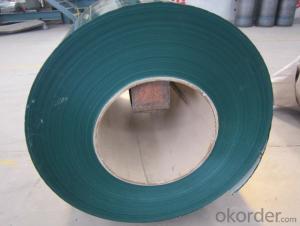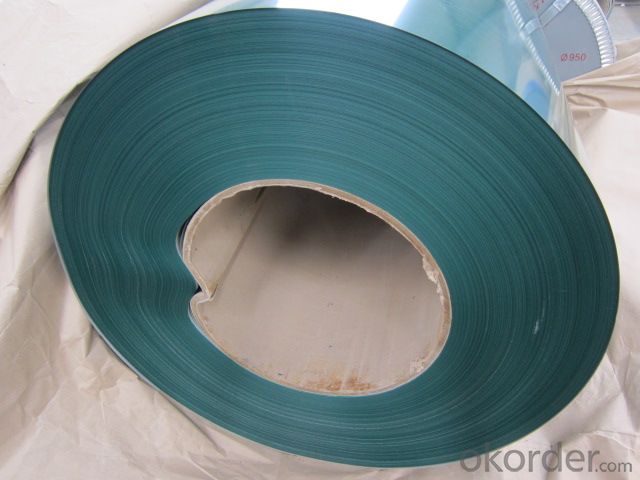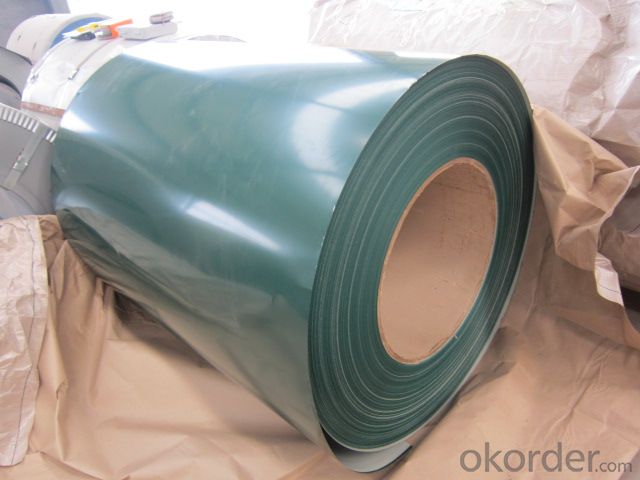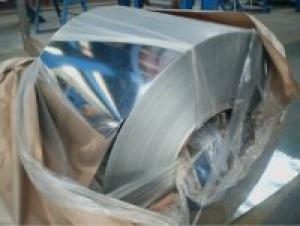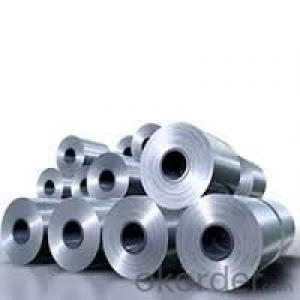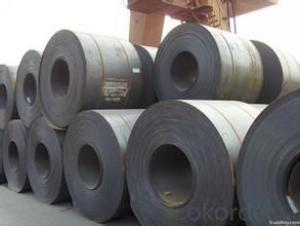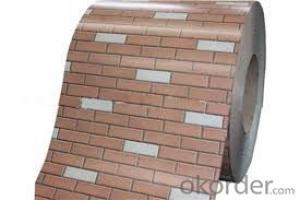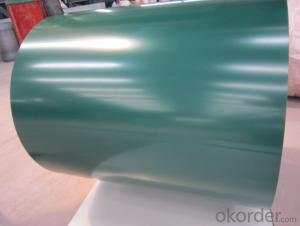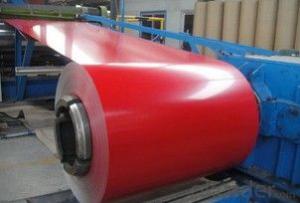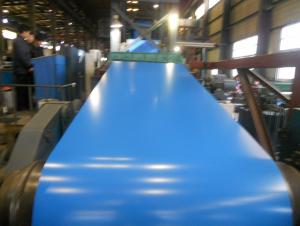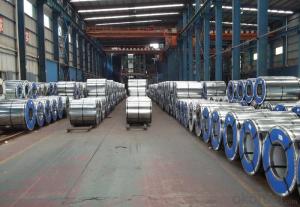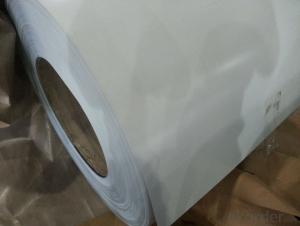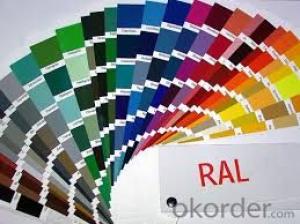Colored Pre Painted Galvanized Steel Coil in Coil
- Loading Port:
- Tianjin
- Payment Terms:
- TT OR LC
- Min Order Qty:
- 25 m.t.
- Supply Capability:
- 5000 m.t./month
OKorder Service Pledge
OKorder Financial Service
You Might Also Like
Description:
The production process has evolved from one-coating-and-one-baking to double-coating-and-double-baking, and even three-coating-and-three-baking.
The base metals for Pre Painted Steel Coil consist of cold rolled, HDG electro-galvanized and hot-dip Alum-zinc coated steel. The finish coats of Pre Painted Steel Coil can be classified into groups as follows: polyester, silicon modified polyesters, polyvinylidene fluoride, high-durability polyester
The Pre Painted Steel Coil can also be classified into groups by their surface textures, namely regular pre-painted sheets, embossed sheets and printed sheets.
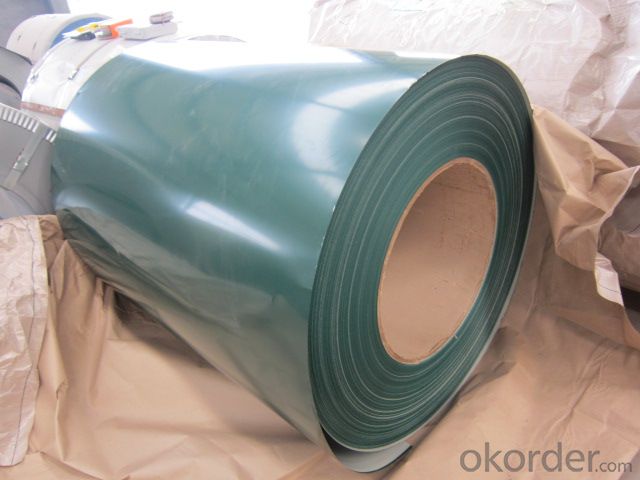
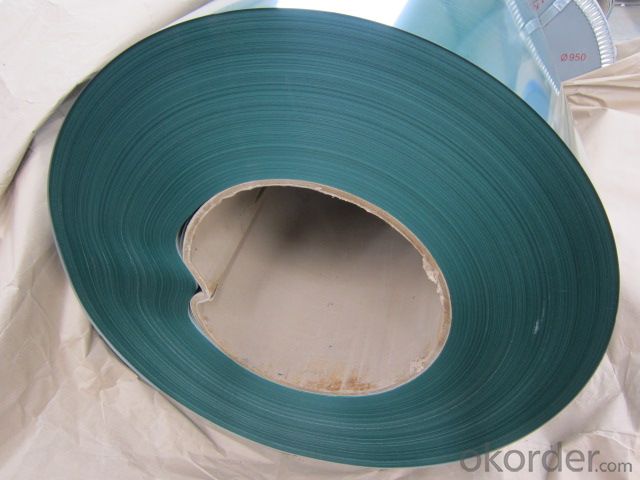
Application:
Suitable for indoor or outdoor decoration, color lasting for at least 10 years for outdoor using, could for roll forming., conditioning, micro-wave oven, bread maker,solar water heater,condencing apparatus,Blackboard, white board,chalkboard, hidden cell blackboard,bulletin board,Central heating slice, lampshade, chifforobe, desk, bed, locker, bookshelf,garbage can, billboard, typewriter, instrument panel, weight sensor, photographic equipment,coffin, fence, Prepainted Galvanized Steel Coil
Product Specification:
Paint: PE or PVDF
Color pre painted steel in coil
Thickness: 0.3-0.8mm
Width: 914-1250mm
Inner Diameter: 508mm,610MM
Weight of Steel Coil: 3-7MT
Available Dipped Layer: 50-150g/m2
Coating Type: Al-Zn Alloy
Front Side Paint Thickness: 15-25μm
Back Side Paint Thickness: 5-7μm
Standard:JIS G3312,CGCC
FAQ:
1.Can you produce the goods according to the customer’s requirements?
Yes, of course, it can be customized according to customers requirements.
2.How about the color of the Pre Painted Steel Coil
The color of the Pre Painted Steel Coil has a very wide selection, like orange, cream-colored, dark sky blue, sea blue, bright red, brick red, ivory white, porcelain blue.
3.Could you tell me the package for the Pre Painted Steel Coil?
Usually Standard export seaworthy package: waterproof paper+steel trip packed+wooden case seaworthy package
- Q: What is the lifespan of steel coils?
- The lifespan of steel coils can vary depending on various factors such as the quality of the steel, the environment it is exposed to, and how well it is maintained. However, on average, steel coils can last anywhere from 10 to 30 years.
- Q: Can steel coils be used in the production of aerospace components?
- Yes, steel coils can be used in the production of aerospace components. Steel coils are commonly used in the manufacturing of various aerospace components such as structural frames, fasteners, landing gear, and engine parts. The high strength, durability, and versatility of steel make it a suitable material for these critical components in the aerospace industry.
- Q: How are steel coils formed into specific shapes?
- Coil slitting and coil forming are the two processes used to shape steel coils into specific forms. In coil slitting, a large steel coil is unwound and passed through rotating circular blades that cut it into narrower strips of the desired width. These strips are then rewound into smaller coils called slit coils. Once the steel strips have been slit, they can undergo coil forming to achieve the desired shapes. Coil forming involves various processes such as roll forming, stamping, bending, or pressing. Roll forming gradually shapes the steel strip by passing it through a series of rollers designed to bend it in specific ways. Stamping, on the other hand, uses a die and a press to cut or shape the metal into intricate forms. This method is preferred when high precision is necessary. Bending and pressing are also employed to manipulate the steel strip into desired curves or angles. Bending utilizes machines or tools to apply force, while pressing employs hydraulic or mechanical presses to shape the steel strip according to the mold or die design. In conclusion, the formation of steel coils into specific shapes involves both coil slitting and coil forming techniques. These techniques, including roll forming, stamping, bending, and pressing, enable manufacturers to transform steel coils into various shapes and profiles, catering to different applications in industries such as construction, automotive, and manufacturing.
- Q: How are steel coils used in the production of packaging machinery?
- Steel coils are used in the production of packaging machinery as they serve as the raw material for manufacturing various components of the machinery, such as frames, supports, and structural elements. The steel coils are processed through cutting, bending, and welding to create the necessary parts, ensuring durability and stability in the packaging machinery's construction.
- Q: What is the standard length of steel coils?
- The standard length of steel coils can vary depending on the industry and specific requirements, but common lengths range from 30 feet to 60 feet.
- Q: Can steel coils be coated with scratch-resistant materials?
- Yes, steel coils can be coated with scratch-resistant materials. These materials are designed to provide an additional layer of protection to the steel surface, minimizing the risk of scratches or damage during handling, transportation, or storage.
- Q: If I wear a pair of thick wool socks, is walking around in the snow with steel-toed boots going to be a problem? I'm wondering if the steel will make my toes too cold.
- Dr. Martens makes a number of pairs of steel toed work boots. I have never owned a pair of their steel toes, but I have owned several pairs of their shoes and boots, the oldest of which is fifteen years old and still going strong. They take a couple of weeks to break in, but once they do, they are practically molded to your foot. They are more expensive, but they last a LONG time. Good Luck!
- Q: How are steel coils used in the manufacturing of pipes and tubes?
- Steel coils are used in the manufacturing of pipes and tubes by being processed through a series of steps. Initially, the coils are uncoiled and flattened, then shaped into a tubular form using a variety of methods such as welding or seamless techniques. These tubular shapes are then further processed, including cutting, bending, and welding, to create pipes and tubes of various sizes and specifications.
- Q: What are the dimensions of steel coils used in the aerospace industry?
- The dimensions of steel coils used in the aerospace industry vary depending on the specific application and requirements. However, common dimensions for steel coils in aerospace applications can range from a few inches to several feet in width and have a diameter of around 3 to 6 feet.
- Q: How are steel coils inspected for quality assurance?
- Quality assurance for steel coils involves a rigorous process that includes various tests and checks to ensure their quality. Initially, a visual inspection is carried out to identify surface defects like scratches, dents, or rust, ensuring the coils are in good condition and free from obvious flaws. Afterward, a dimensional inspection is performed to verify the coils' dimensions and tolerances. This involves measuring their width, thickness, and length to ensure they meet the specified requirements. Any deviations from the standard dimensions are noted and addressed. Moreover, mechanical testing is conducted to assess the strength and durability of the steel coils. Tensile tests are performed to measure their strength and elasticity, while impact tests evaluate their ability to withstand sudden loads or shocks. Furthermore, chemical analysis is undertaken to determine the composition and purity of the steel. Samples are taken from the coils and analyzed in a laboratory to check for impurities or elements that could affect the quality. To comply with industry standards, non-destructive testing methods like ultrasonic testing or magnetic particle inspection may be used. These methods can detect internal defects or irregularities that may not be visible to the naked eye. Additionally, surface treatment inspections, such as galvanization or coating checks, may be performed to ensure the protective layers are applied correctly and meet the necessary specifications. In summary, the quality assurance process for steel coils includes visual, dimensional, mechanical, chemical, and non-destructive testing methods. These thorough inspections guarantee that the steel coils meet the required quality standards and are suitable for their intended applications.
Send your message to us
Colored Pre Painted Galvanized Steel Coil in Coil
- Loading Port:
- Tianjin
- Payment Terms:
- TT OR LC
- Min Order Qty:
- 25 m.t.
- Supply Capability:
- 5000 m.t./month
OKorder Service Pledge
OKorder Financial Service
Similar products
Hot products
Hot Searches
Related keywords
